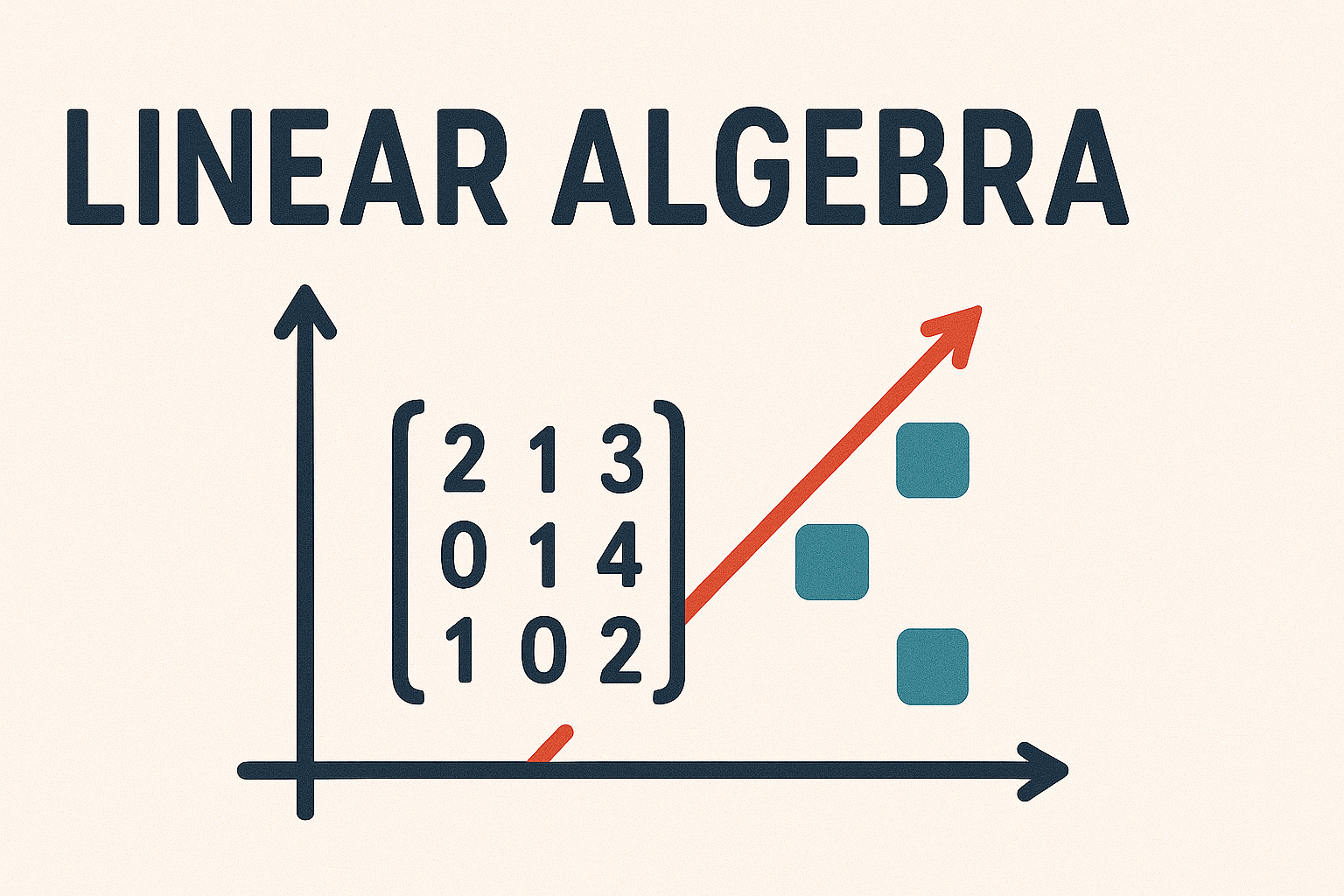1.4. Special matrices#
Some matrices have certain properties which makes them useful for various mathematical applications. Understanding special matrices and their properties is important for gaining a deeper insight into linear algebra and its practical applications.
Name |
Definition |
Example |
|---|---|---|
Square matrix |
An \(m \times n\) matrix where \(m = n\) |
\(\begin{pmatrix} 1 & 2 \\ 3 & 4 \end{pmatrix}\) |
Zero matrix |
An \(m \times n\) matrix of zeros |
\(\begin{pmatrix} 0 & 0 & 0 \\ 0 & 0 & 0 \end{pmatrix}\) |
Diagonal matrix |
A non-zero square matrix where \(a_{ij} = 0\) where \(i \neq j\) |
\(\begin{pmatrix} 1 & 0 & 0 \\ 0 & 2 & 0 \\ 0 & 0 & 3 \end{pmatrix}\) |
Identity matrix |
A square matrix \(I\) such that \([I]_{ij} = \begin{cases} 1, &i = j, \\ 0, & \text{otherwise} \end{cases}\) |
\(\begin{pmatrix} 1 & 0 & 0 \\ 0 & 1 & 0 \\ 0 & 0 & 1 \end{pmatrix} \) |
Symmetric matrix |
A square matrix \(A\) such that \(a_{ij} = a_{ji}\) |
\(\begin{pmatrix} 1 & 2 & 3 \\ 2 & 1 & 4 \\ 3 & 4 & 1 \end{pmatrix}\) |
Upper triangular matrix |
A square matrix \(A\) such that \(a_{ij} = 0\) where \(i > j\) |
\(\begin{pmatrix} 1 & 2 & 3 \\ 0 & 4 & 5 \\ 0 & 0 & 6 \end{pmatrix}\) |
Lower triangular matrix |
A square matrix \(A\) such that \(a_{ij} = 0\) where \(i < j\) |
\(\begin{pmatrix} 1 & 0 & 0 \\ 2 & 3 & 0 \\ 4 & 5 & 6 \end{pmatrix}\) |
Theorem 1.5 (Properties of special matrices)
For any \(m \times n\) matrix \(A\) and the zero matrix is the neutral element with respect to matrix addition and multiplication, i.e.,
\( A + \mathbf{0} = \mathbf{0} + A = A\)
\( A \mathbf{0} = \mathbf{0} A = \mathbf{0}\)
\(I A = A I = A\)
\(AA^{-1} = I\) where \(A^{-1}\) is the inverse of \(A\) (see inverse matrices)
If \(A = A^\mathsf{T}\) then \(A\) is a symmetric matrix
